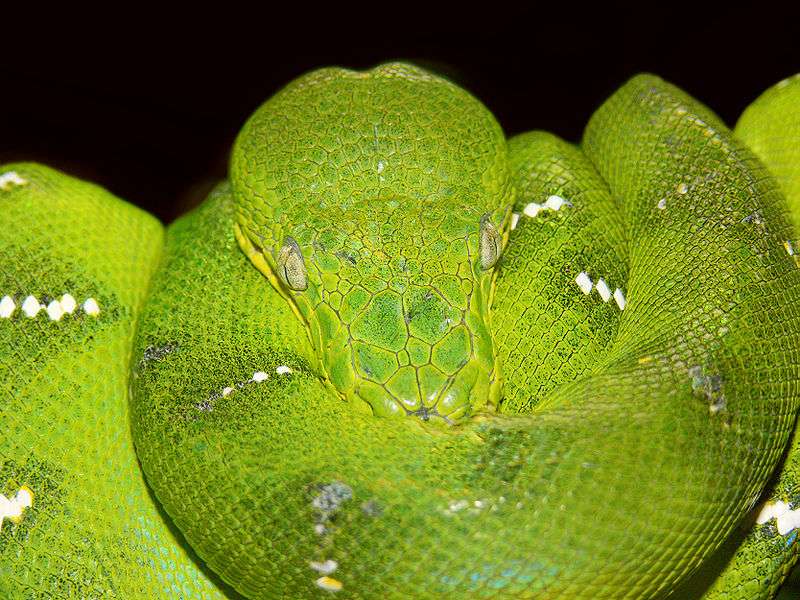
Description:
Scientific name: Corallus caninus
Life span: 15 years
They have slim bodies and a wiry appearance. This frequently causes new owners to overfeed. The body narrows to form a prehensile tail. This indicates that the story holds onto tree branches and serves as an anchor. The Emerald Boa’s head has a heart-shaped form and a dog-like appearance. It joins a considerably thinner neck at the base of the skull. Infants and juveniles typically have reddish or orange coloring. You most likely have a Green Tree Python, not an Emerald Tree Boa, if your juvenile is yellow.

Native Region/Habitat
In addition to northern Bolivia, these snakes can also be found in northern Brazil, eastern Peru, southern Colombia, southern Venezuela, French Guiana, eastern Ecuador, Suriname, Guyana, and the far north of Bolivia.
Behavior:
The northern Emerald Boa tends to be more aggressive and is difficult to handle. The southern Emerald Boa is more suited to living as a pet because of its calmer demeanor. But improper handling will encourage a defensive reaction. These snakes are arboreal, which means they reside in the tropical rainforest’s tree canopy. They practically never descend to the ground since they are so well adapted to living in trees. In its enclosure, your snake will nearly always be perched on a branch in the traditional U-shape of tree-dwelling boas.
Care As a pet/In captivity:
It is ideal to keep these snakes as exhibition animals, and handling or removing them from their enclosure should only occur while they are being fed.
- A 10 to 20 gallon Rubbermaid-style container is suitable for housing neonates and young animals. Adults require space to climb vertically and move horizontally via a temperature gradient in order to feel comfortable. We advise a 3 feet length, 2.5 feet wide, and 2.5 feet high enclosure.
- Day and night, the temperature on the enclosure’s cool side should be around 80°F. Day and night, the enclosure’s warm side should be around 85°F. No higher than 88°F should be reached in the basking area. This can be accomplished with a ceramic heat bulb or a heating lamp.
- Emerald Tree Boas are native to the tropical rainforest and need high humidity levels of between 70% and 80%.
- One thawed pinky mouse every week should be introduced to neonates. The size of your snake’s prey item should increase as well. Our dietary regimen: Prey size equals the snake’s biggest part’s circumference (not the head). When they are two years old, their regimen can be changed to one appropriate-sized prey item every two weeks.
Table





